-
Posts
4,766 -
Joined
-
Last visited
-
Days Won
13
Posts posted by hiker01
-
-
-
Something new in the stable:


-
 1
1
-
-
Welcome! What part of Thailand?
-
Ditto as everyone had said already! We love you, Man!
-
Thanks for posting! That AR'ed cyclop makes a huge difference!
-
......more sad stories from Chomolungma.....4 more dead hikers as of yesterday!
But we're gonna deal with that here:
More Kathmandu pictures:
Swayambhunath (Devnagari: स्वयम्भूनाथ स्तुप; sometimes romanized Swoyambhunath) is an ancient religious complex atop a hill in the Kathmandu Valley, west of Kathmandu city. It is also known as the Monkey Temple as there are holy monkeys living in parts of the temple in the north-west:
-
td STANDS for Trusted Dealers........http://www.rwg.cc/forum/230-watches-clothing-accessories/ and take your pick!
-
Here's a picture of the Blue Ceramic Sub.....my own personal fav:

-
Thanks all........
Yup.....when I left, it started to get crazy up there. That's the reason why we started a bit early, by late March the crowd starts piling up!
These deaths up there won't be the last until the Nepali gov't. starts managing the application and enforce some regulations or laws limiting
the number of people going up each day. I mean 150 0f you queeing to go up, after staying in the death zone overnight....@15% oxygen. By
this time your brain and lungs are starving for oxygen....and you only have enough to summit and get down.....if the wait is 2 hours up, that
means the wait will be about the same to go down, that's almost four hours you exposed yourself up there and slowly running out of oxygen!
I still think I made the right decision to go down in my situation and when I still can. Most oof the people who die up there have so many
different reasons why they decided to stay and push themselves....but I think one or two of a them are:
- "I'm here already, I can do it!" - and this is while their brain don't have enough oxygen to think straight in the 1st place.
- "$hit, I spent $70K (add or minus a few thousand!), I better finish this!" - and this is while their brain don't have enough oxygen to think straight in the 1st place.
I feel for those who died up there, but it was there choice!
-
-
Thanks everyone for the kind words......that means a lot!
I'm a wee bit disappointed, but better alive than buried up there. Mt. Everest will always be there and as long as I'm alive and kicking, it's always
there calling my name.......so, until we meet again.
And I don't know if you guys heard or read, there was a plane crash in Kathmandu yesterday, similar plane and same airline we took to Lukla....out of
21, only six survived!
Well, since I had about a month left on my itinerary after I got out of the hospital, I thought I'll take it and do some foot trekking all over Kathmandu
and Thailand, so hang on to your seats and join me for some picture blog........I'll post whenever I have the time:
Durbar Square:
-
-
-
Day eleven: due to the storm and my deteriorating condition, we decided to stay the night in Gorakshep. Wind was blowing hard mixed with some snow that night. I had some more of the garlic soup,
but my condition was getting worst.
In the morning, the storm abated a bit....but still very cloudy and poor visibility, the wind was down to about 25-30 miles an hour.
After a little breakfast...of one egg and black tea, I decided to make it to base camp so that I could consult with a Doctor and use a satellite phone to call the Kathmandu office of my guide company....
so off we go.
It was hard climb, I barely have the energy to make every step.....my guide and sherpa had to help me up, I had each of my arms around each of them.....they literally carry me up to base camp.....
After two agonizing hours, we made it. Eklal and Ramjin drop me off our tent and went looking for the base camp Doctor, came back with him after 10 minutes....
He checked me out and told me that I have a minor altitude sickness, but he suspect a severe bacterial infection in my stomach! He suggested we called the Kathmandu office via Sat phone so
that we could consult with a doctor in town. After we got thru the office, the owner patch us to a doctor at CIWEC clinic (world renowned for its expertise & research in illnesses associated with travel and altitude)
and he give me the bombshell.........my Mt. Everest adventure is OVER! One more day and I would be buried at base camp! He wants me to come down ASAP!
So.......the owner arrange for a Heli rescue......but because of the stormy condition up at the camp, I have to come down about 4000-5000 ft where the chopper could land.......
Eklal and Ramjin had to carry me down (I halfway walk) around there shoulders.....after 3 hours, we got to Pheriche and the chopper got there 30 minutes later (we had the
pilot pickup Lesley from Namche Bazaar - saved her two days of down climb to Lukla):
on the way to Kathmandu.....the ride from Pheriche was like a roller coaster ride.....the pilot had to skim the mountaintops due to the altitude:
Finally......@the clinic.....and after X-rays, blood and poop test...........
the test came back, it confirmed that I had a minor lung edema and severe bacterial infection.....antibiotics via IV drip......
whAT AN END to my Everest Adventure.............................
-
Sorry for the confusion there S! Thanks for posting it, though!
-
By the way, how much did this whole expedition cost in monetary value?
Depending on the Guide company you sign up with, it ranges from $60K to $75K.
Curious F,
Sounds like you are suffering from a food born illness but what are the symptoms of altitude sickness?
Hey B!
From WIKIpedia:
Altitude sickness—also known as acute mountain sickness (AMS), altitude illness, hypobaropathy, or soroche—is a pathological effect of high altitude on humans, caused by acute exposure to low partial pressure of oxygen at high altitude. It commonly occurs above 2,400 metres (8,000 feet). It presents as a collection of nonspecific symptoms, acquired at high altitude or in low air pressure, resembling a case of "flu, carbon monoxide poisoning, or a hangover". It is hard to determine who will be affected by altitude sickness, as there are no specific factors that correlate with a susceptibility to altitude sickness. However, most people can ascend to 2,400 meters (8,000 ft) without difficulty.
Acute mountain sickness can progress to high altitude pulmonary edema (HAPE) or high altitude cerebral edema (HACE), which are potentially fatal.
Causes
The percentage of oxygen in air, at 21%, remains almost unchanged up to 70,000 feet (21,000 m).[6] The RMS velocities of diatomic nitrogen and oxygen are very similar and thus no change occurs in the ratio of oxygen to nitrogen. However, it is the air density itself, the number of molecules (of both oxygen and nitrogen) per given level, which drops as altitude increases. Consequently, the available amount of oxygen to sustain mental and physical alertness decreases above 10,000 feet (3,000 m).[7] Although the cabin altitude in modern passenger aircraft is kept to 8,000 feet (2,400 m) or lower, some passengers on long-haul flights may experience some symptoms of altitude sickness.[8]
Dehydration due to the higher rate of water vapor lost from the lungs at higher altitudes may contribute to the symptoms of altitude sickness.[9]
The rate of ascent, altitude attained, amount of physical activity at high altitude, as well as individual susceptibility, are contributing factors to the onset and severity of high-altitude illness.
Altitude sickness usually occurs following a rapid ascent and can usually be prevented by ascending slowly.[4] In most of these cases, the symptoms are temporary and usually abate as altitude acclimatisation occurs. However, in extreme cases, altitude sickness can be fatal.
Signs and symptoms

People have different susceptibilities to altitude sickness; for some otherwise healthy people, acute mountain sickness (AMS) can begin to appear at around 2000 meters (6,500 ft) above sea level, such as at many mountain ski resorts, equivalent to a pressure of 80 kPa.[14] AMS is the most frequent type of altitude sickness encountered. Symptoms often manifest themselves six to ten hours after ascent and generally subside in one to two days, but they occasionally develop into the more serious conditions. Symptoms include headache, fatigue, stomach illness, dizziness, and sleep disturbance.[4] Exertion aggravates the symptoms.
The Lake Louise assessment system of AMS is based on a self-report questionnaire as well as a quick clinical assessment.[15]
Those individuals with the lowest initial partial pressure of end-tidal pCO2 (the lowest concentration of carbon dioxide at the end of the respiratory cycle, a measure of a higher alveolar ventilation) and corresponding high oxygen saturation levels tend to have a lower incidence of Acute Mountain Sickness than those with high end-tidal pCO2 and low oxygen saturation levels.[16]
[edit]Primary symptoms
Headaches are the primary symptom used to diagnose altitude sickness, although a headache is also a symptom ofdehydration. A headache occurring at an altitude above 2,400 metres (8,000 feet = 76 kPa), combined with any one or more of the following symptoms, may indicate altitude sickness:
- Lack of appetite, nausea, or vomiting
- Fatigue or weakness
- Dizziness or lightheadedness
- Insomnia
- Pins and needles
- Shortness of breath upon exertion
- Nosebleed
- Persistent rapid pulse
- Drowsiness
- General malaise
- Peripheral edema (swelling of hands, feet, and face).
[edit]Severe symptoms
Symptoms that may indicate life-threatening altitude sickness include: Pulmonary edema (fluid in the lungs)- Symptoms similar to bronchitis
- Persistent dry cough
- Fever
- Shortness of breath even when resting
Cerebral edema (swelling of the brain)- Headache that does not respond to analgesics
- Unsteady gait
- Gradual loss of consciousness
- Increased nausea
- Retinal hemorrhage
The most serious symptoms of altitude sickness arise from edema (fluid accumulation in the tissues of the body). At very high altitude, humans can get either high altitude pulmonary edema (HAPE), or high altitude cerebral edema (HACE). The physiological cause of altitude-induced edema is not conclusively established. It is currently believed, however, that HACE is caused by local vasodilation of cerebral blood vessels in response to hypoxia, resulting in greater blood flow and, consequently, greater capillary pressures. On the other hand, HAPE may be due to general vasoconstriction in the pulmonary circulation (normally a response to regional ventilation-perfusion mismatches) which, with constant or increased cardiac output, also leads to increases in capillary pressures. For those suffering HACE, dexamethasone may provide temporary relief from symptoms in order to keep descending under their own power.
HAPE can progress rapidly and is often fatal. Symptoms include fatigue, severe dyspnea at rest, and cough that is initially dry but may progress to produce pink, frothy sputum. Descent to lower altitudes alleviates the symptoms of HAPE.
HACE is a life threatening condition that can lead to coma or death. Symptoms include headache, fatigue, visual impairment, bladder dysfunction, bowel dysfunction, loss of coordination, paralysis on one side of the body, and confusion. Descent to lower altitudes may save those afflicted with HACE.
[edit]Prevention
Ascending slowly is the best way to avoid altitude sickness.[4] Avoiding strenuous activity such as skiing, hiking, etc. in the first 24 hours at high altitude reduces the symptoms of AMS. As alcohol tends to cause dehydration, which exacerbates AMS, avoiding alcohol consumption in the first 24-hours at a higher altitude is optimal.
[edit]Altitude acclimatization
Altitude acclimatization is the process of adjusting to decreasing oxygen levels at higher elevations, in order to avoid altitude sickness.[17] Once above approximately 3,000 metres (10,000 feet = 70 kPa), most climbers and high-altitude trekkers take the "climb-high, sleep-low" approach. For high-altitude climbers, a typical acclimatization regimen might be to stay a few days at a base camp, climb up to a higher camp (slowly), and then return to base camp. A subsequent climb to the higher camp then includes an overnight stay. This process is then repeated a few times, each time extending the time spent at higher altitudes to let the body adjust to the oxygen level there, a process that involves the production of additional red blood cells.[citation needed] Once the climber has acclimatised to a given altitude, the process is repeated with camps placed at progressively higher elevations. The general rule of thumb is to not ascend more than 300 metres (1,000 ft) per day to sleep. That is, one can climb from 3,000 (10,000 feet = 70 kPa) to 4,500 metres (15,000 feet = 58 kPa) in one day, but one should then descend back to 3,300 metres (11,000 feet = 67.5 kPa) to sleep. This process cannot safely be rushed, and this is why climbers need to spend days (or even weeks at times) acclimatising before attempting to climb a high peak. Simulated altitude equipment that produces hypoxic (reduced oxygen) air can be used to acclimate to high altitude, reducing the total time required on the mountain itself.[citation needed]
Altitude acclimatization is necessary for some people who move rapidly from lower altitudes to intermediate altitudes (e.g., by aircraft and ground transportation over a few hours), such as from sea level to 8,000 feet (2,400 m) as in many Colorado, USA mountain resorts. Stopping at an intermediate altitude overnight can alleviate or eliminate occurrences of AMS.
[edit]Medical treatment
The drug acetazolamide may help some people making a rapid ascent to sleeping altitude above 2,700 metres (9,000 ft), and it may also be effective if started early in the course of AMS.[18] The Everest Base Camp Medical Centre cautions against its routine use as a substitute for a reasonable ascent schedule, except where rapid ascent is forced by flying into high altitude locations or due to terrain considerations.[19] The Centre suggests a dosage of 125–250 mg twice daily for prophylaxis, starting from 24 hours before ascending until a few days at the highest altitude or on descending;[19] with 250 mg twice daily recommended for treatment of AMS.[20] The Centers for Disease Control and Preventionsuggest a lower dose for prevention of 125 mg acetazolamide every 12 hours.[21] The CDC advises that Dexamethasone be reserved for treatment of AMS and HACE during descents, and notes that Nifedipine may prevent HAPE.[21]
A single randomized controlled trial found that sumatriptan may help prevent altitude sickness.[22] Despite their popularity, antioxidant treatments have not been found to be effective medications for prevention of AMS.[23] Interest in phosphodiesterase inhibitors such as sildenafil has been limited by the possibility that these drugs might worsen the headache of mountain sickness.[24]
A promising possible preventative treatment for altitude sickness is myo-inositol trispyrophosphate (ITPP), which increases the amount of oxygen released by hemoglobin.
For centuries, indigenous peoples of the Americas such as the Aymaras of the Altiplano, have chewed coca leaves to try to alleviate the symptoms of mild altitude sickness. In Chinese and Tibetan traditional medicine, extract of root tissue of Radix rhodiola is often taken in order to prevent the same symptoms.
[edit]Oxygen enrichment
In high-altitude conditions, oxygen enrichment can counteract the hypoxia related effects of altitude sickness. A small amount of supplemental oxygen reduces the equivalent altitude in climate-controlled rooms. At 3,400 meters (11,155 feet = 67 kPa), raising the oxygen concentration level by 5 percent via an oxygen concentrator and an existing ventilation system provides an effective altitude of 3,000 metres (10,000 feet = 70 kPa), which is more tolerable for surface-dwellers.[25]
[edit]Other methods
Increased water intake may also help in acclimatisation[26] to replace the fluids lost through heavier breathing in the thin, dry air found at altitude, although consuming excessive quantities ("over-hydration") has no benefits and may cause dangerous hyponatremia.
Oxygen from gas bottles or liquid containers can be applied directly via a nasal cannula or mask. Oxygen concentrators based upon pressure swing adsorption (PSA), VSA, or vacuum-pressure swing adsorption (VPSA) can be used to generate the oxygen if electricity is available. Stationary oxygen concentrators typically use PSA technology, which has performance degradations at the lower barometric pressures at high altitudes. One way to compensate for the performance degradation is to utilize a concentrator with more flow capacity. There are also portable oxygen concentrators that can be used on vehicular DC power or on internal batteries, and at least one system commercially available measures and compensates for the altitude effect on its performance up to 4,000 meters (13,000 ft). The application of high-purity oxygen from one of these methods increases the partial pressure of oxygen by raising the FiO2 (fraction of inspired oxygen).
Also, the use of Nitric Oxide has been proven to address and relieve altitude sickness. 12 scientists recently released a study in which Mount Everest trekkers were allowed to naturally adapt to altitude during their ascent. They were tested for nitric oxide levels along the way. The scientists found that their bodies naturally produced more nitric oxide as they climbed higher. "Our results suggest that nitric oxide is an integral part of the human physiological response to hypoxia." Scientific Reports
[edit]Treatment
The only reliable treatment and in many cases the only option available is to descend. Attempts to treat or stabilise the patient in situ at altitude is dangerous unless highly controlled and with good medical facilities. However, the following treatments have been used when the patient's location and circumstances permit:
[*]Oxygen may be used for mild to moderate AMS below 12,000 feet (3,700 m) and is commonly provided by physicians at mountain resorts. Symptoms abate in 12–36 hours without the need to descend.
[*]For more serious cases of AMS, or where rapid descent is impractical, a Gamow bag, a portable plastic hyperbaric chamber inflated with a foot pump, can be used to reduce the effective altitude by as much as 1,500 meters (5,000 ft). A Gamow bag is generally used only as an aid to evacuate severe AMS patients, not to treat them at altitude.
[*]Acetazolamide may assist in altitude aclimatisation but is not a reliable treatment for established cases of even mild altitude sickness.[27][28]
[*]The folk remedy for altitude sickness in Ecuador, Peru and Bolivia is a tea made from the coca plant. See mate de coca.
[*]Other treatments include injectable steroids to reduce pulmonary edema, this may buy time to descend but treats a symptom, it does not treat the underlying AMS.
- Headache that does not respond to analgesics
- Symptoms similar to bronchitis
- Lack of appetite, nausea, or vomiting
-
Post some pix and someone might offer to help you.......
-
Great job, S! Love it!
-
-
Day ten: Sicker than ever........all I could say, but not proud of....I pooped and threw-up all all over the foothills of Mt. Everest
 .......
....... 
I definitely now know I'm in deep $hit......I picked up a bad bug from one of the food I ate, must be from the YAK STEAK! Food
just don't stay inside me anymore.....I lost about 15 to 20 lbs!
Tried to eat some of this pizza last night:
It probably was good, but to me it tasted like a piece of cardboard......I've been living on liquid....
breakfast was a no different either.......so, after some black tea and Vit. B12.....off we go....
next destination.......Everest base camp.....1200ft away......seems so close, but yet so far.
Approaching Gorakshep......some ominous clouds:
.........and all hell broke loose.....winds picked up and freezing rain started.....turned to hailstorm!
-
Thanks guys!!!

that's why i believe more people die on the way down than up...
@F --> why did the woman climbing with you call it quits?...
The trail was just too much for and she was really struggling and holding us back.........
-
-
Day Nine: Another cold night......sicker.....didn't eat dinner last night......barely finished my toast and eggs this morning.....but packed and ready to go......off to Luboche today, another tough hiking day, close to 2000ft altitude gain.....6-7 hours of slugging climb.
Lesley, my hiking companion from UK/Kenya......decided to end her climb....felt so bad for her, but she just lost it.......our last breakfast together:
.......and off we go, just me Eklal (my guide) and Sherpa Ramjin ......and encountered yak traffic right away :
Lunch break at Dughla:
None for me though....just water with Gatorade powder, my taste buds turned to mush....everything takes like the sole of my boots.....
I have to push myself mentally now.....my energy is almost zapped.....but then seeing this sherpa on the way up:
revives me a little......
Just keep on pushing.......
-
Day eight: last night was another friggin cold night. Damn......been feeling sick too, starting to have severe stomach pain.....like a knife is being run thru my upper gut, not a very good sign. Didn't eat dinner last night.
Woke up with a little bit of a headache.....had breakfast of black tea, toast and boiled egg. Went back to bed......
Feeling a little better at lunch time.....had another black tea and two boiled eggs.....went for a short hike around the village after....
and then just crashed the whole day.........stomach pain came back.......
Eklal woke me up at dinner time......but my appetite is completely kaput! He suggested for me to have at least some garlic soup and toast.....
Goodnight.......................................



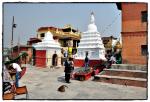
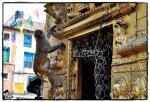

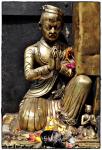
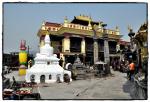
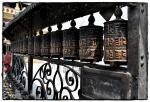
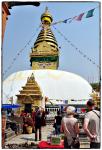
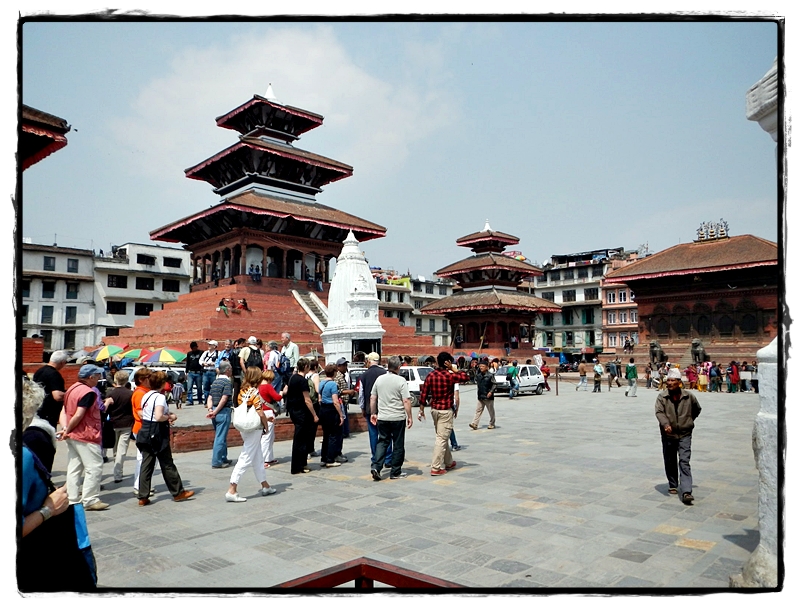
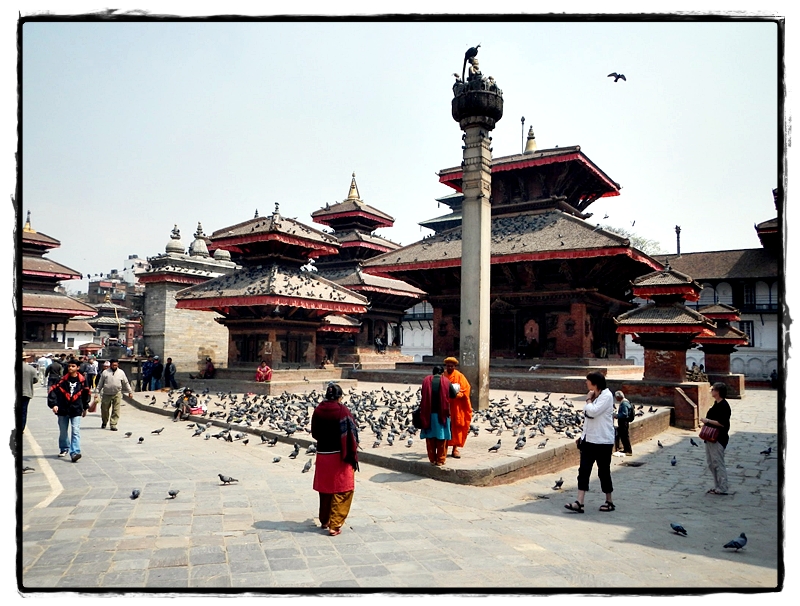
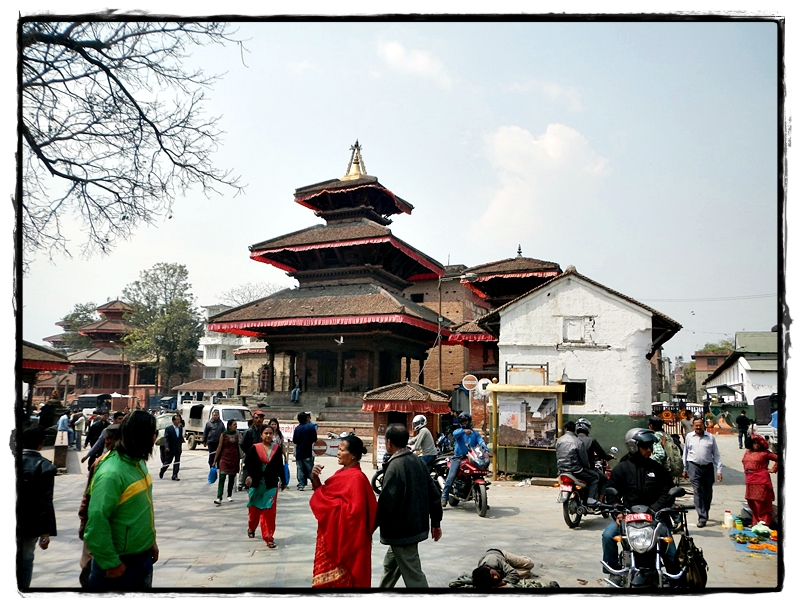
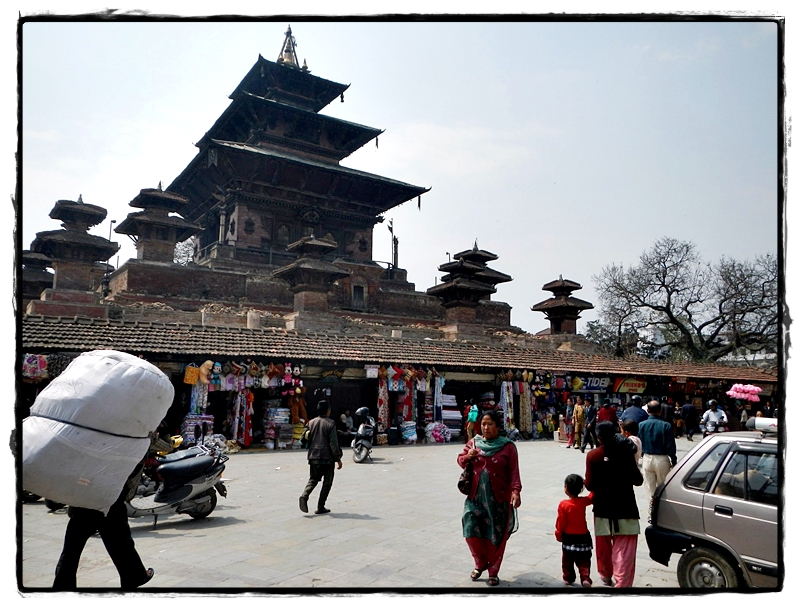


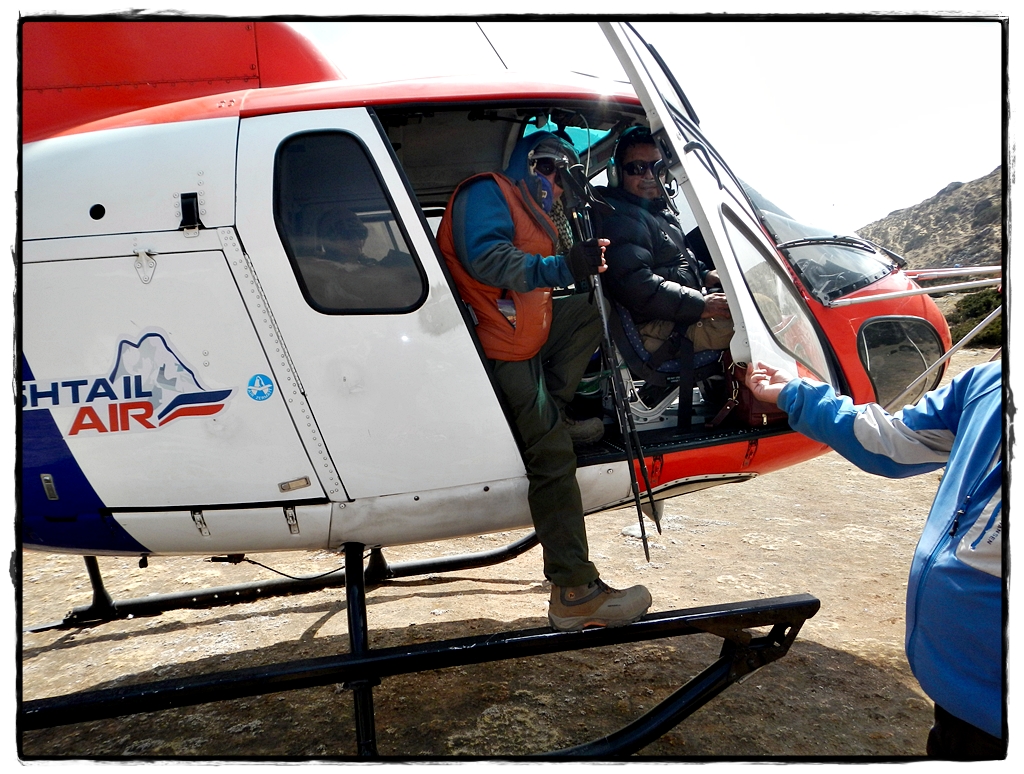



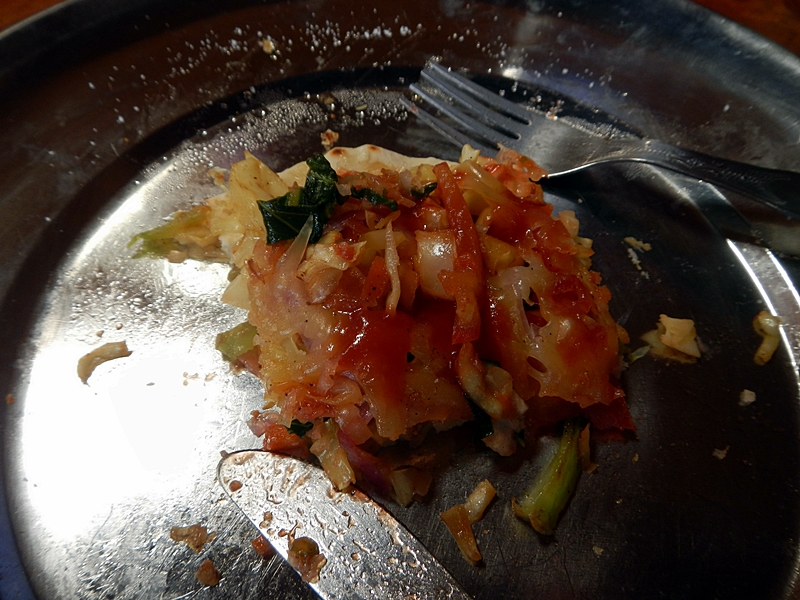
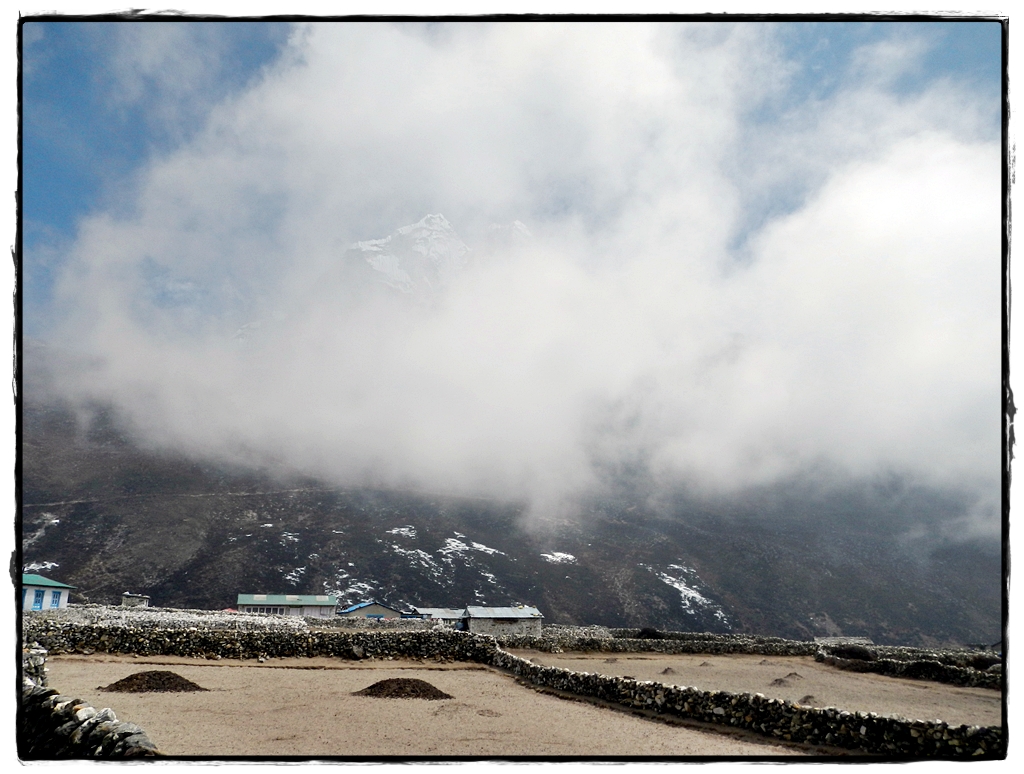
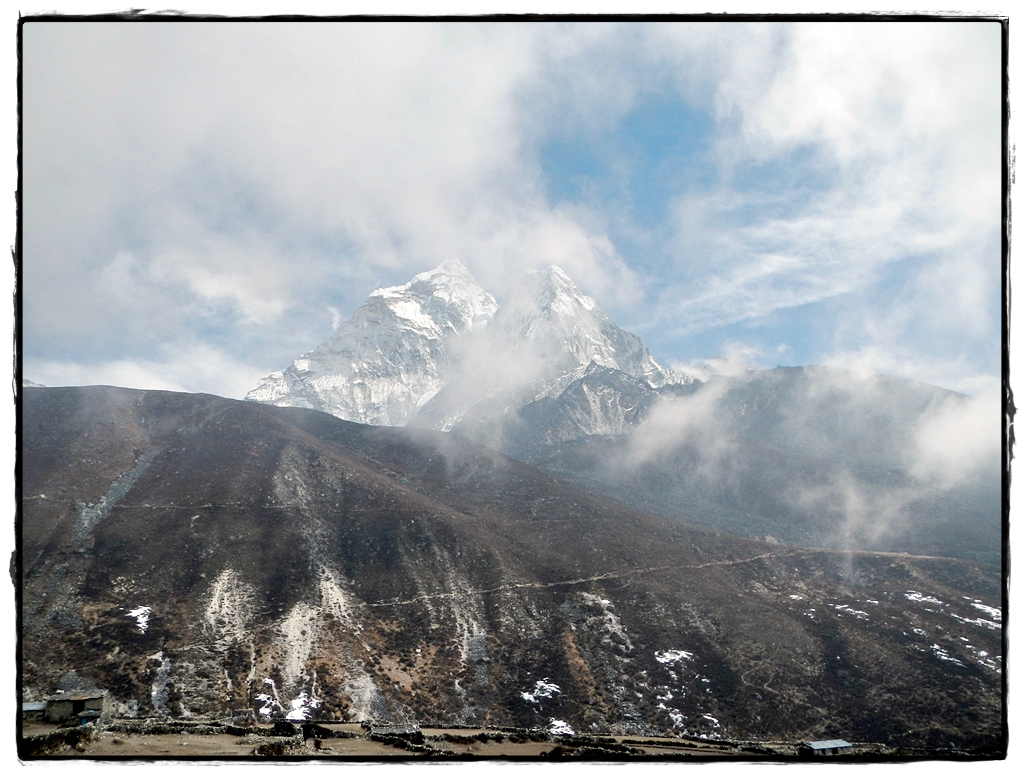

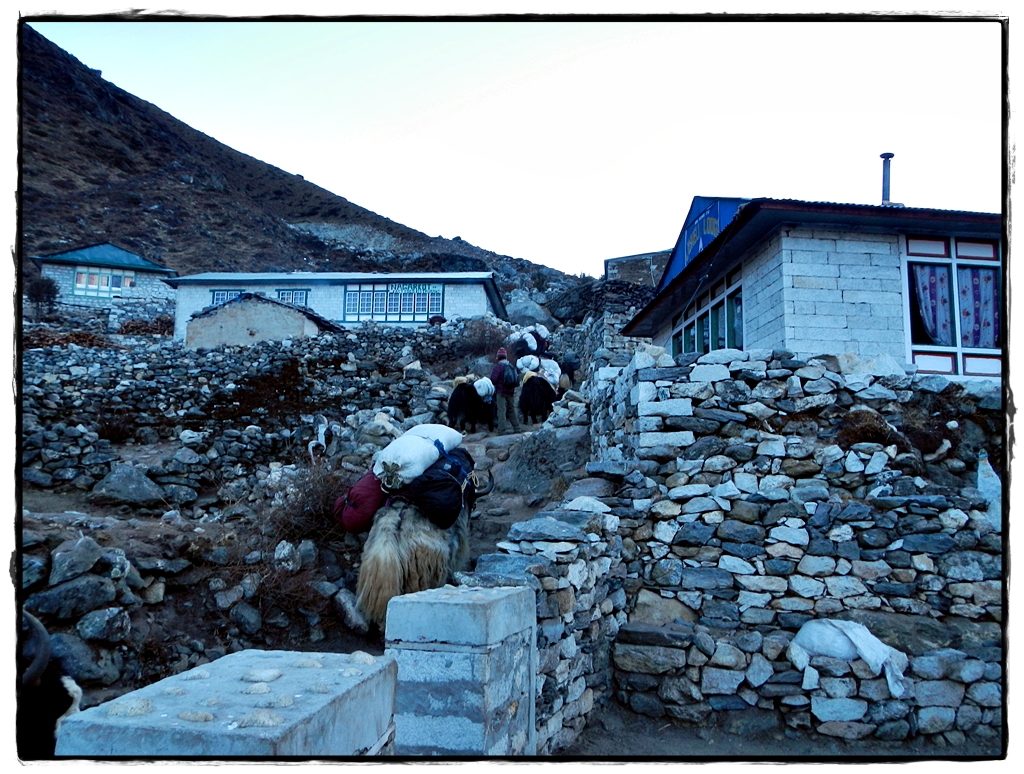
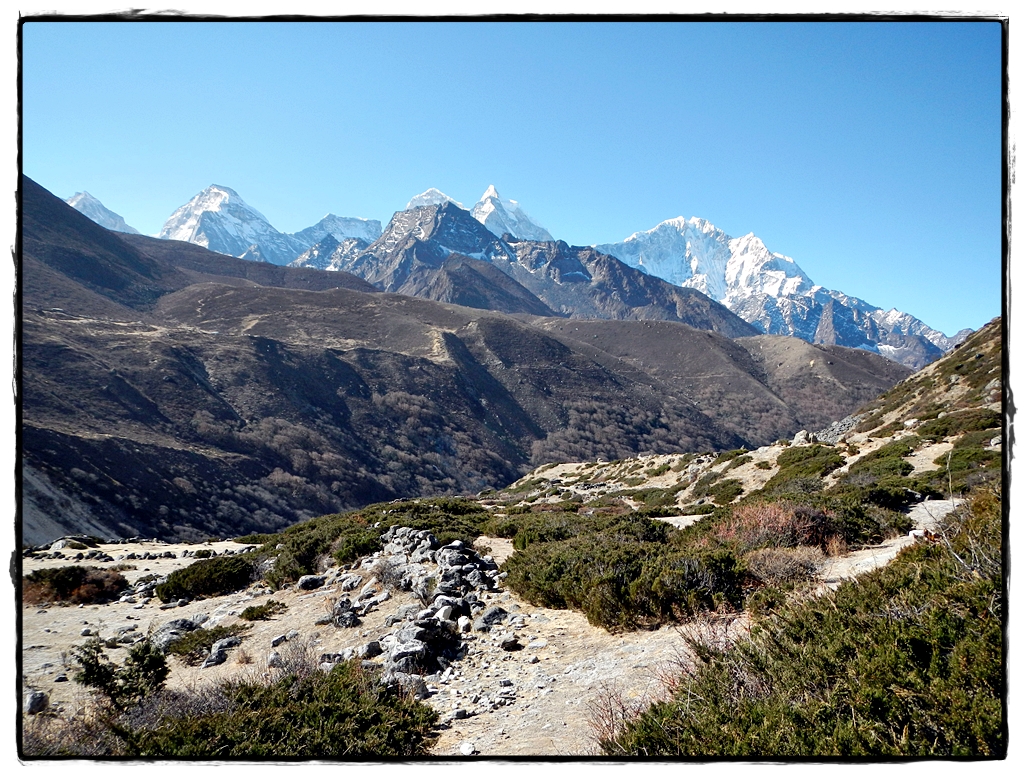
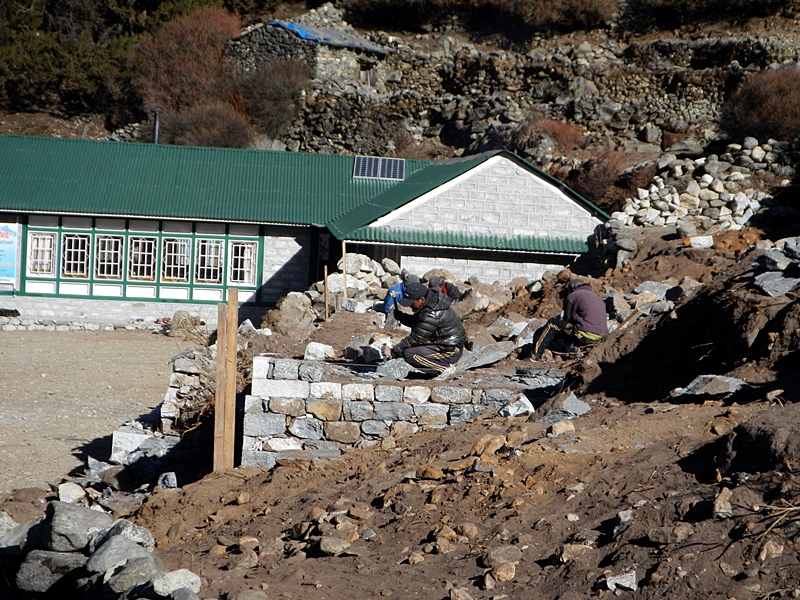
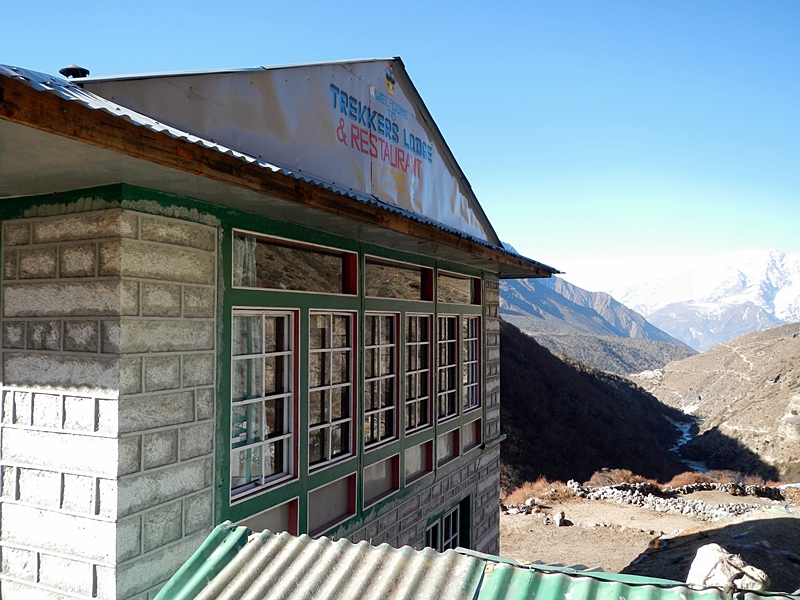
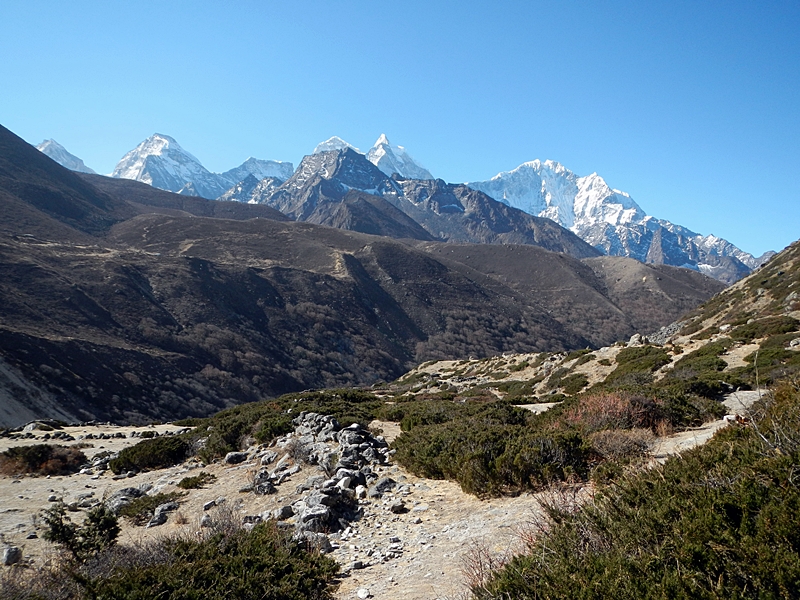
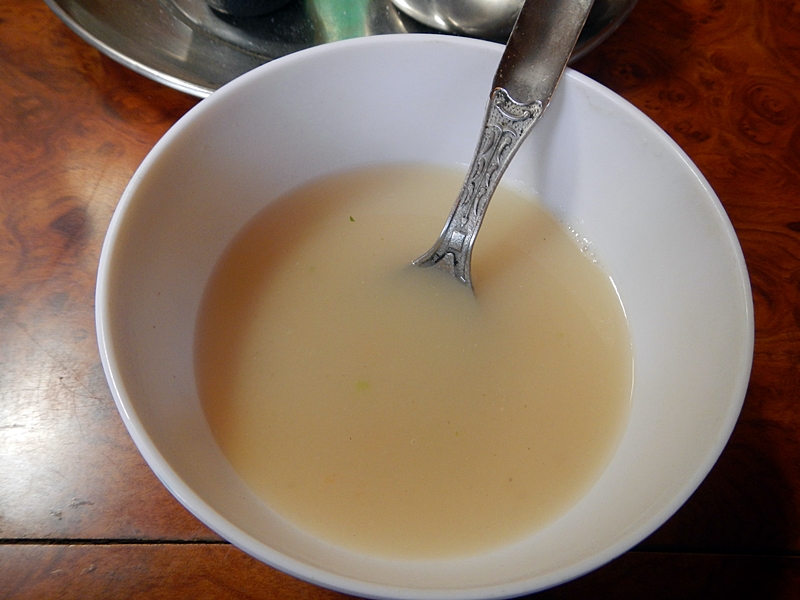
Saturday wrist check
in General Discussion
Posted
SD-M series for the weekend: